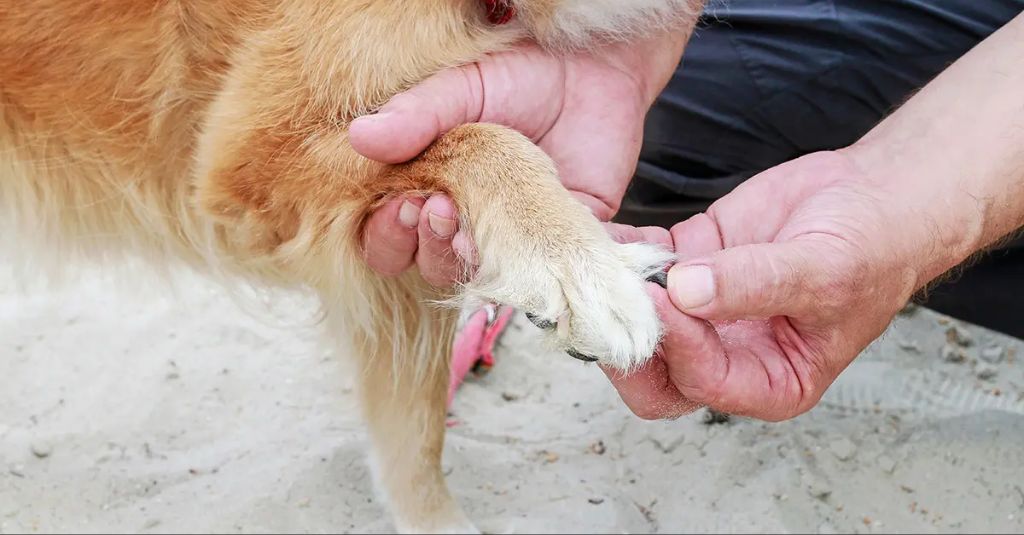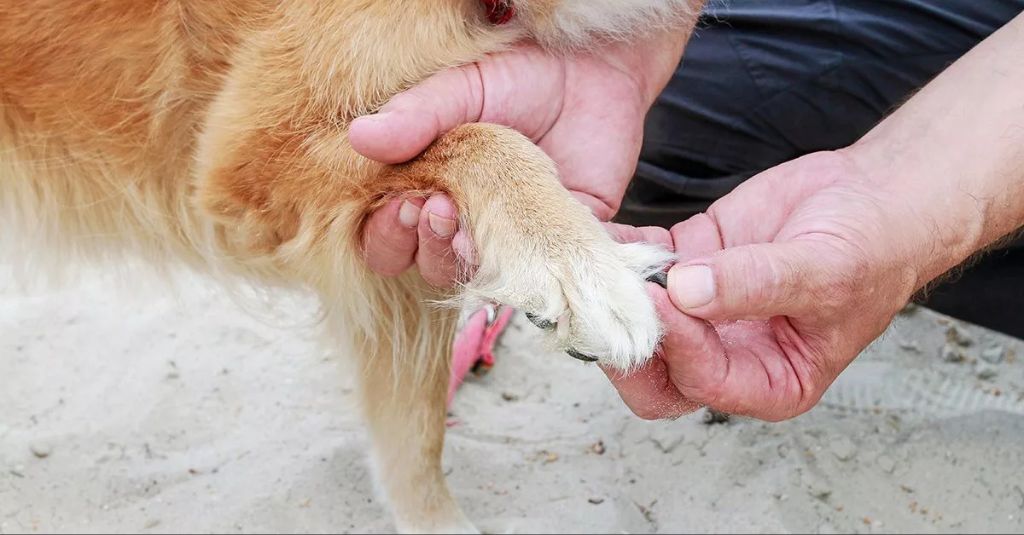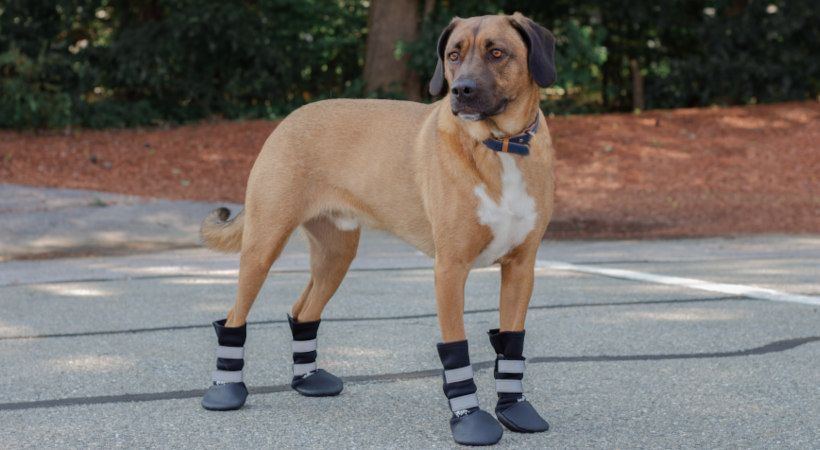Introduction
While taking your dog for a walk or playing around in the yard, you may notice that one of their nails starts bleeding after a romp or walk. This can be alarming for any pet owner, but try not to panic. Nail injuries in dogs are common, especially in active breeds. However, there are steps you can take to stop the bleeding, treat the injury and prevent it from happening again.
In a survey of over 1,000 dog owners, 31.4% reported their dog had experienced a painful nail trim in the past (https://www.sciencedirect.com/science/article/abs/pii/S0168159122001885). So you are not alone if your pup has injured a nail. With some first aid and TLC, your dog’s nail should heal up nicely.
Causes of Bleeding Nails
There are several potential causes of bleeding nails in dogs after a walk, including:
- Long nails – Nails that are allowed to grow too long have a greater chance of hitting the quick and bleeding when they make impact with the ground during a walk. Keeping your dog’s nails trimmed regularly can help avoid this issue (source).
- Hitting the quick – The quick contains the blood vessel inside the nail. If you trim the nail too short or the long nail hits the ground at an angle, it can cause the quick to be exposed and bleed (source).
- Rough terrain – Jagged sidewalks, gravel roads, rocky trails etc. can catch on a nail and cause it to crack or tear, resulting in bleeding.
- Intense exercise – High energy activities like running or jumping that involve a lot of impact on the nails can lead to bleeding if the nails are already long or brittle.
Keeping your dog’s nails trimmed to an appropriate length for their lifestyle is the best way to prevent bleeding nails after walks from occurring.
Signs of an Injured Nail
There are several signs that indicate your dog may have an injured nail that is bleeding or broken. The most obvious sign is bleeding from the nail. This can range from a few drops of blood to heavier bleeding depending on the severity of the injury. According to PetMD, discharge or crustiness around the base of the nail can also be a sign of injury https://www.petmd.com/dog/care/first-aid-broken-nails-dogs.
Your dog may also be limping or licking the injured nail frequently. The nail may be misshapen, deformed, or appear brittle or cracked. Sensitivity around the nail is another indicator of injury – your dog may yelp or pull away if you touch the area gently. According to VCA Animal Hospitals, the quick of the nail may be exposed, which is very painful https://vcahospitals.com/know-your-pet/first-aid-for-broken-nails-in-dogs. Pay attention to these signs after activities where nails can get injured, like excessive walking or running, especially on rough terrain.
Stopping the Bleeding
If your dog’s nail starts bleeding after a walk or other activity, it’s important to stop the bleeding as soon as possible. Here are some tips for stopping nail bleeding:

Apply pressure: Immediately apply gentle, direct pressure to the nail with a clean cloth or piece of gauze. Applying pressure for 3-5 minutes can often stop minor bleeding. Just be careful not to hurt your dog.
Use styptic powder: Styptic powder, often sold at pet stores, can help constrict blood vessels and stop bleeding (WahlUSA). Simply dip the nail in the powder or pack some powder onto the nail tip with a cotton swab. The bleeding should stop within a few minutes.
Bandage the nail: After applying pressure and/or styptic powder, wrap the nail in a light bandage or piece of gauze and apply gentle pressure. This protects the nail and keeps pressure on.
Treating an Injured Nail
If your dog’s nail is injured, it’s important to properly treat it to prevent infection and promote healing. The first step is to clean the injured nail by gently washing it with soap and water or an antiseptic solution like diluted chlorhexidine. Be sure to remove any debris or dirt around the nail bed. According to VCA Animal Hospitals, you can apply a disinfectant like betadine to the injured nail using a cotton swab.
After cleaning, apply an antibiotic ointment like polysporin to the tip of the nail and cuticle area where the nail emerges from the skin. This helps prevent bacteria from entering the wound as it heals. Allow the nail to heal on its own without trimming or cutting it. The antibiotics will promote healing from the inside out. Keep the nail bandaged and let the old nail gradually fall off on its own as the new nail grows in over several weeks. According to PetMD, changing the bandage daily allows you to monitor healing.

Preventing Future Injuries
One of the best ways to prevent a dog’s nails from bleeding on walks is by keeping them properly trimmed. Long nails have a higher chance of catching on surfaces and ripping or tearing which leads to bleeding. Trimming your dog’s nails regularly every 2-4 weeks will help keep them short and blunt.
Using a nail grinder or dremel tool on a regular basis can also help smooth and round the sharp edges of nails to reduce the risk of injury. Work carefully and gradually when introducing a dremel tool, taking breaks to avoid overheating the nail. Reference this guide for tips on how to dremel dog nails properly.
Putting booties or socks on your dog’s paws can provide a protective barrier when going for walks. The fabric covers the nails to help prevent catching or tearing. Introduce booties slowly with positive reinforcement so your dog feels comfortable wearing them.

With diligent nail care and protection for outdoor walks, you can help prevent painful nail injuries that lead to bleeding and create a safer and happier experience for your dog.
When to See the Vet
Excessive bleeding from a broken nail, especially if it lasts more than 5-10 minutes after applying pressure, is a sign that you should see your veterinarian. Extended bleeding could indicate that the nail’s quick (the blood supply and nerve endings inside the nail) has been significantly injured. VCA Animal Hospitals states that seeing your vet is especially important if “blood is steadily dripping out or squirting from the nail” (https://vcahospitals.com/know-your-pet/first-aid-for-broken-nails-in-dogs).
You should also have a vet examine any injury that has damaged the nail bed or caused limping. Cracks, chips, and other minor nail injuries can often be treated at home, but injuries involving the nail bed tissue require professional veterinary attention. The Wildest explains that these types of injuries “should be treated by a veterinarian” because they are “typically stubborn” in healing (https://www.thewildest.com/dog-health/cracked-broken-or-torn-nails).
In summary, take your dog to the vet promptly if an injured nail results in heavy bleeding, damage to the nail bed, or limping. The vet can provide the proper treatment and care to address more severe nail injuries.
At the Vet Visit
When you take your dog to the vet after a nail injury, the vet will likely perform several procedures to treat the broken nail and prevent infection, including:
X-ray: The vet may take x-rays of the injured paw to look for signs of bone damage or foreign objects lodged in the wound. X-rays allow the vet to fully assess the severity of the injury.
Antibiotics: Antibiotics may be prescribed to prevent infection, especially if the nail bed or any tissue is exposed. Common antibiotics used include amoxicillin trihydrate/clavulanate potassium, cephalexin, or clindamycin. [1]
Nail removal: If the nail is partially torn or barely attached, the vet may fully remove the damaged nail to prevent further tearing and enable drainage. This also allows medication to be applied directly to the quick.
The vet will also clean the injured paw thoroughly and properly bandage it to control bleeding and protect the wound. Pain medication may be prescribed for several days after as well. Follow all discharge instructions carefully and attend any recommended follow-up appointments so the vet can monitor healing.
Recovery Process
After an injured nail, dogs will need time to recover before returning to normal activity. Some key aspects of the recovery process include:
Restricted Activity: It’s important to restrict your dog’s activity while the nail injury heals. Take them on shorter, gentler walks and limit running, jumping, and playing. This prevents further damage and gives the nail time to start healing. Keep your dog rested and calm in the days following the injury.

Bandages: Your vet may apply a bandage and change it periodically to keep the injured toe clean and protected. Follow all instructions carefully for bandage changes and keeping the area dry. Watch for signs of irritation or infection. If a bandage isn’t applied, you may tape some gauze or a cotton ball over the nail to keep debris out.
Pain Medication: Your vet will likely prescribe pain medication to keep your dog comfortable during recovery. Give this medication exactly as directed. Preventing pain helps limit activity and prevent further damage while the nail mends.
Conclusion
In conclusion, bleeding nails are a common injury in dogs that can occur during activities like walks or play. It’s important to act quickly to stop bleeding and prevent infection. Applying pressure, styptic powder or cornstarch, and bandaging the paw can help control bleeding. Keeping the nail clean while it heals is critical. If the nail is partially torn or the quick is exposed, leaving the damaged part of the nail in place will help protect the sensitive nail bed underneath. Preventing future injuries through regular nail trims, conditioning walks, and avoiding rough play is key.
While bleeding nails can look scary, prompt first aid followed by monitoring for signs of infection allows for healing in most mild cases. More severe injuries like completely torn or crushed nails may require veterinary attention to properly bandage, medicate, and manage pain. With proper care, even seriously damaged nails can fully regrow over time. Staying alert on walks and being prepared with first aid knowledge can help keep our canine companions happy and healthy.